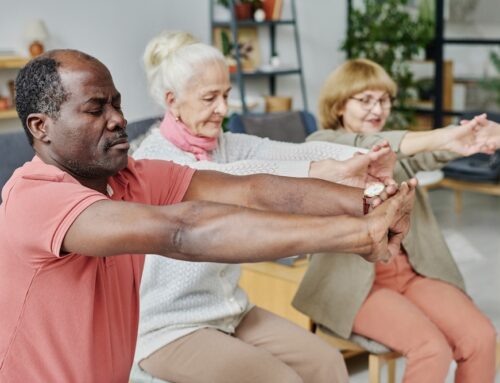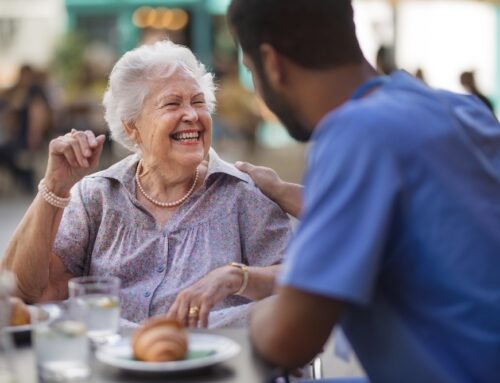Finding the best Palm Springs memory care and moving a loved one into the facility takes a great deal of preparation, planning, and consideration.
Seniors with dementia often have a hard time dealing with any kind of stress, especially one that involves them leaving their beloved home and community. They might also struggle with coping and adjusting to a new place with a bunch of new people. But here’s the silver lining: it doesn’t always have to be this way.
It is possible to make a senior loved one’s transition a smooth sailing experience. All you need is a mixture of effective communication, compassion, patience, and collaboration with the caregivers in your chosen memory care community.
With that in mind, here are some compassionate steps to take in preparing your loved one for their relocation. Plus, here are some tips on what to do before, during, and after your loved one’s move.
1. Address the Move with Your Loved One
Springing a major life decision (such as this move) to your loved one will just leave them feeling betrayed and confused. So, it’s important to be as honest as possible when addressing the transition with your senior loved one.
Talk to them about this and why it is a hard but significant decision. You can point out the quality care in the facility, their diverse activities, or the friendly senior community. Always reassure them that loved ones are nearby and can visit them regularly.
Keep it simple and make sure that everyone in the family should follow the same script to avoid confusion.
2. Plan and Prepare
Most caregivers often refrain family members from including their senior loved ones in the planning process. Looking for the most suitable Palm Springs memory care, visiting each facility, and downsizing can take a toll on their mental and physical health. Still, you know your loved one best, so it depends on how you think they might respond to this situation.
Some of the things you should take care of include the following:
- Choosing the best memory care facility based on health needs and lifestyle preference.
- Packing your loved one’s stuff and hiring a moving company.
- Talking to your loved one’s GP.
- Coordinating with the facility regarding your loved one’s medication and medical appointments.

3. Pack for Your Loved One
Coordinate with the facility’s management about the furniture and appliances they provide for their residence. You can also ask for a copy of your loved one’s living space floor plan. This way, you can get an idea of what pieces of furniture they can bring that will fit in their new home.
Besides their personal items, make sure to pack things that have a sentimental value to your loved one. It can be a series of family photographs, awards, trophies, mementos, or anything they hold dear.
Other furniture that might have a lot of meaning for them are those that they use every day. It can be that old-looking recliner, their vintage dresser, or their favorite sewing machine.
Additionally, you can ask your loved ones what they want to bring with them to their new home. This might make them feel good about their active role in their transition.
4. Set-Up their Living Space Ahead of Time
Set up your loved one’s living space even before their actual moving day to avoid subjecting them to unnecessary stress. Here are some tips to keep in mind when arranging and decorating your loved one’s new home:
- Decorate using everyday items as much as possible.
- Make it homey but don’t let it become cluttered for safety reasons.
- Check for tripping and falling hazards, such as a slippery rug, haphazard electrical cords, or dim lighting.
- Make sure that the things that they use every day are easily accessible and placed in convenient locations.
- Label drawers, containers, and storage. If possible, keep the arrangement as it was in their old home.
5. Moving Day
During the big day, it is better to have a close family member accompany your senior loved one and keep them busy. Caregivers in Palm Springs memory care can accommodate them to a facility tour or participate in an activity that your loved one would enjoy.
Let another family member take care of the stressful stuff, such as the moving, unpacking, and final room additions. After everything has been set up, give them time to see and get a feel of the place.
Afterward, you can encourage them to meet their new neighbors, caregivers or join in activities if they feel like it.
6. Acknowledge Your Loved One’s Feelings and Concerns
On the moving day itself, your loved one might feel upset, sad, or express their need to “go home.” When this happens, make sure to acknowledge it and let them know that you understand what they’re feeling. Always reassure their fears and concerns with love and empathy.
7. Collaborate with Caregivers and Staff
Caregivers and memory care unit staff know how to handle emotional distress and help residents adjust to this new set-up. You can collaborate with them ahead of time and let them take the lead during the moving day.
Furthermore, caregivers can help ease your concerns regarding your loved one’s health. They can even help improve your relationship with your senior loved one. You can also coordinate with them about your plans for continued communication and connection.
Remember, the first few days of transitioning are crucial for your loved one, so it’s best to have a professional caregiver to guide you.
8. Maintain a Healthy Connection
Everyone needs a lot of time to adjust to their new environment, so the same goes for your loved one with dementia. Just make sure to maintain a healthy connection with them by visiting them in person regularly and talking to them through phone or video calls. You can also encourage close friends and family to visit often.
Talk to the professional caregivers at your Palm Springs memory care community to see how your loved one is faring. Community care partners can advise you when’s the best time to visit and what to do to keep your loved one at ease.






